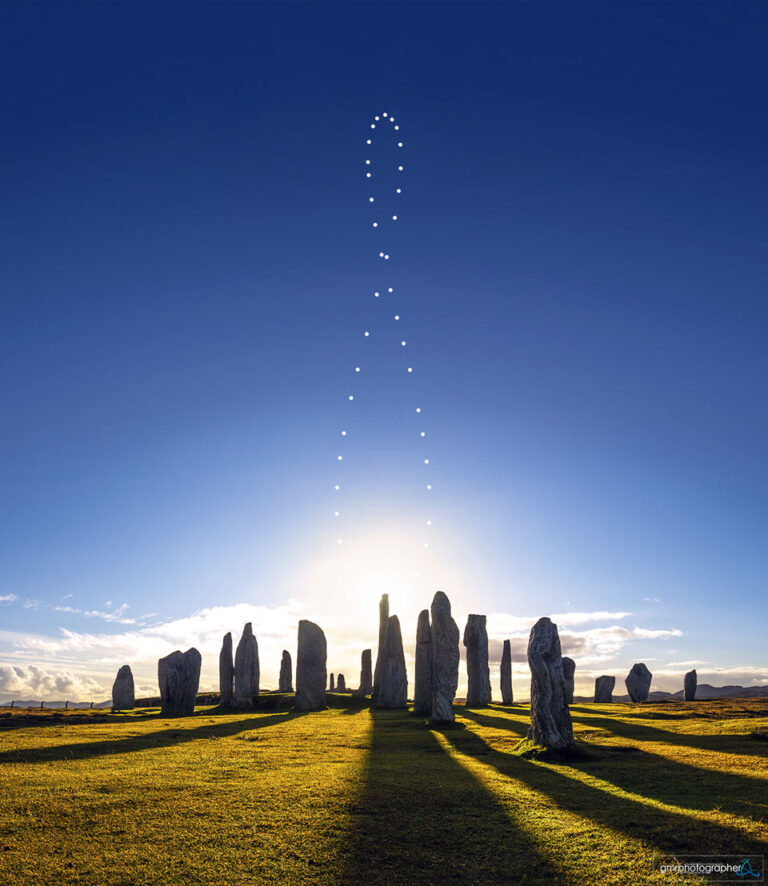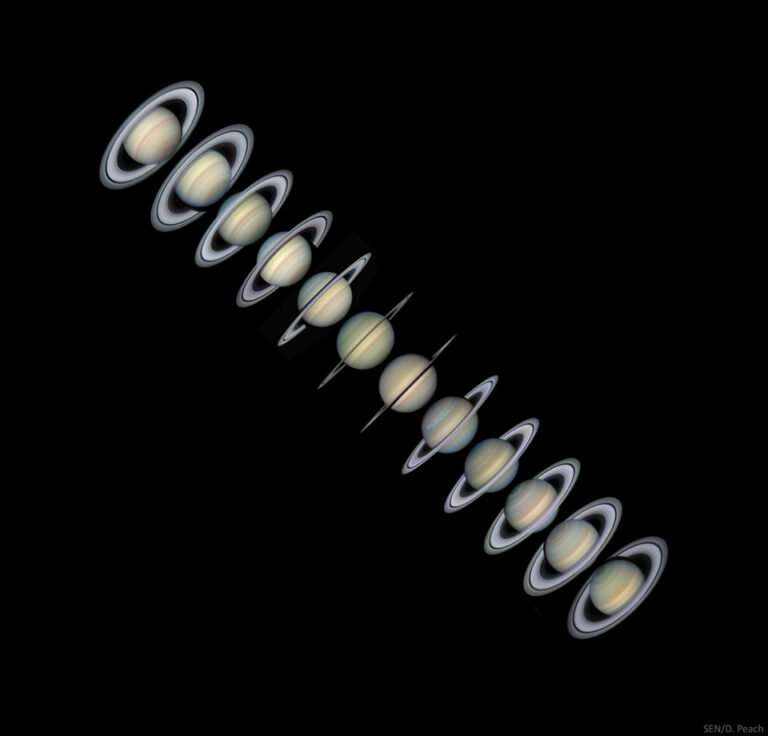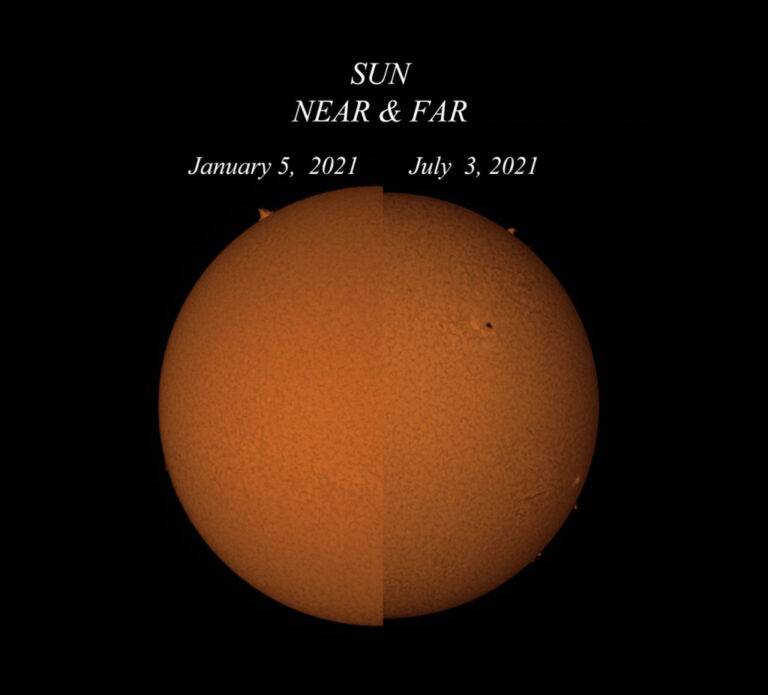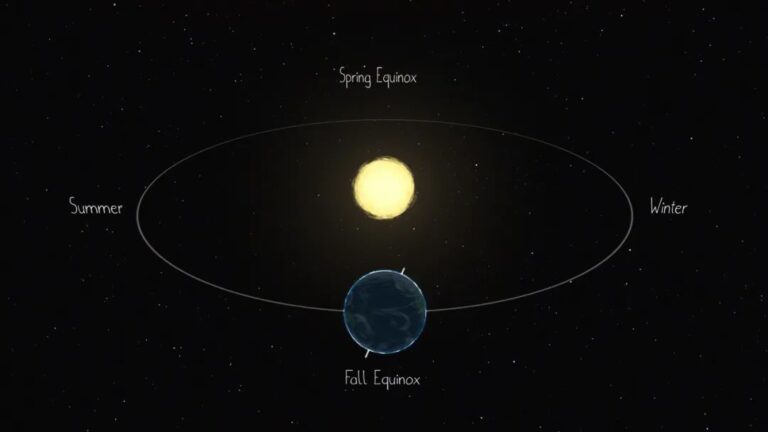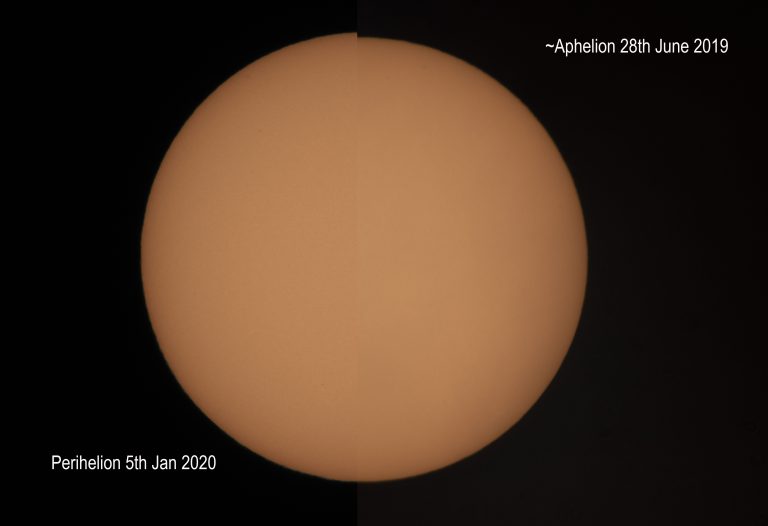土星的一季
2023年8月25日 A Season of Saturn Image Credit & Copyright: Andy Casely Explanation: Ringed planet Saturn will be at its 2023 opposition, opposite the Sun in Earth’s skies, on August 27. While that puts the sixth planet from the Sun at its brightest and well-placed for viewing, its beautiful ring system isn’t visible to the unaided eye. Still, this sequence of telescopic images taken a year apart over the last six years follows both Saturn and rings as seen from inner planet Earth. The gas giant’s ring plane tilts from most open in 2018 to approaching edge-on in 2023 (top to bottom). That’s summer to nearly the autumn equinox for Saturn’s northern hemisphere. In the sharp planetary portraits, Saturn’s northern hexagon and a large storm system…


